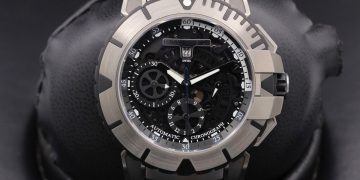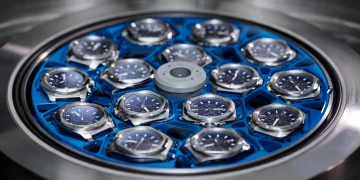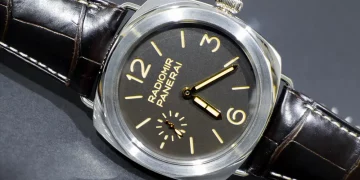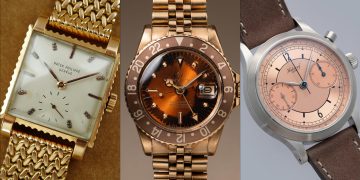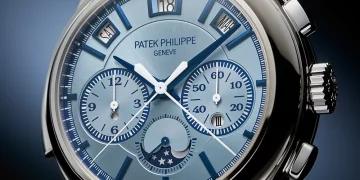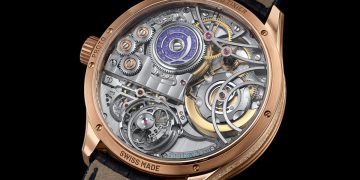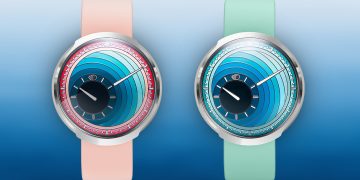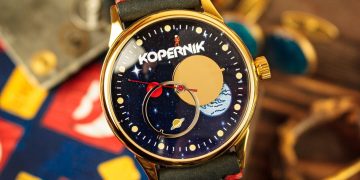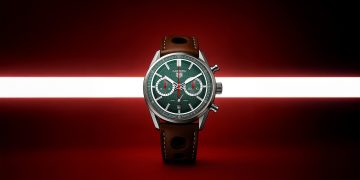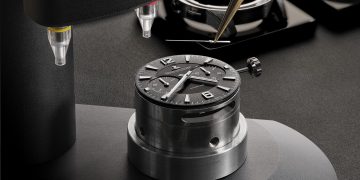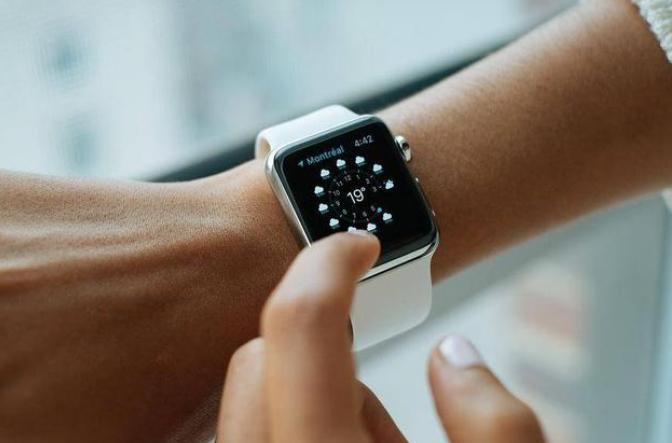The debate between classic mechanical watches and modern smartwatches has been gaining momentum in recent years as both technologies evolve and capture the attention of different generations of consumers. While classic mechanical watches represent the pinnacle of traditional craftsmanship, smartwatches embody the cutting-edge of modern technology, offering a wide range of features that cater to the demands of the digital age. But can the advanced technology of smartwatches ever truly compare to the artistry and craftsmanship of a classic mechanical watch? This question is more complex than it might first appear.
At first glance, it may seem like comparing apples to oranges—mechanical watches are built around intricate, hand-crafted movements, and are often seen as timeless symbols of artistry and heritage, whereas smartwatches are designed with functionality and technology in mind. However, as smartwatches continue to evolve and gain popularity, it’s worth exploring whether the technological innovations in modern smartwatches can ever match the mechanical artistry and enduring legacy of traditional timepieces.
In this article, we will examine the core differences between smartwatches and classic mechanical watches, exploring their respective advantages and limitations. We’ll look at the craftsmanship behind mechanical watches, the technological features of smartwatches, and the emotional and cultural value attached to each. Ultimately, the goal is to determine whether smartwatch technology can rival the enduring appeal of classic mechanical watchmaking craftsmanship.
1. The Art of Craftsmanship in Classic Mechanical Watches
Classic mechanical watches are the epitome of craftsmanship. Each piece is meticulously designed and constructed using highly skilled techniques passed down through generations of watchmakers. These timepieces rely on the precision and artistry of mechanical movements—intricate networks of gears, springs, and escapements working in perfect harmony to measure time.
a. Intricate Mechanics: The Heart of the Watch
The beauty of a mechanical watch lies in its movement—the engine that powers the timepiece. Unlike quartz watches, which are powered by batteries, mechanical watches rely on winding springs, gears, and a balance wheel to measure time. The mechanical movement is an extraordinary feat of engineering, requiring great attention to detail and precision. The movements in high-end mechanical watches are often made by hand, with watchmakers painstakingly assembling the components to ensure perfect alignment and flawless function.
Iconic Swiss brands like Patek Philippe, Rolex, and Audemars Piguet are known for their exceptional craftsmanship in producing mechanical movements that can last for decades, or even generations. These movements are designed to be both beautiful and functional, often featuring intricate decorations such as Geneva stripes, hand-polished bridges, and engraved designs that elevate them beyond mere timekeeping tools into works of art.
b. The Timeless Appeal of Tradition
What truly sets mechanical watches apart is their connection to tradition and history. Watchmaking, as an industry, has been evolving for centuries, and classic timepieces embody the expertise and legacy of watchmakers from the past. Wearing a mechanical watch is not just about telling the time—it’s about wearing a piece of history, a symbol of craftsmanship, and often an investment in something that appreciates over time.
The craftsmanship behind classic watches is deeply embedded in their value. Owning and appreciating a mechanical watch is as much about the story behind the watch as it is about the technical prowess involved in its creation. For many collectors and enthusiasts, the experience of owning a traditional timepiece is one of passion and connection to a long-standing tradition of artisanal excellence.
2. The Rise of Smartwatch Technology
On the other side of the spectrum, smartwatches have emerged as a modern marvel of technology, offering a wide range of functionalities that go beyond simple timekeeping. Smartwatches are designed with the needs of modern consumers in mind, providing an array of features that include fitness tracking, notifications, GPS, heart rate monitoring, and even integration with smartphones and other connected devices.
a. Functionality Over Tradition
Smartwatches are fundamentally different from mechanical timepieces in that they prioritize functionality and digital innovation. Brands like Apple, Garmin, and Samsung have developed smartwatches that cater to a range of purposes, from fitness tracking and health monitoring to serving as a hub for notifications and smartphone apps. These watches are powered by sophisticated operating systems, and they frequently receive software updates to improve performance, adding new features and capabilities over time.
The versatility of smartwatches allows them to serve as multi-functional tools that provide real-time data, offer convenience, and enhance daily life with advanced technology. Unlike mechanical watches, which are generally focused on one purpose—keeping accurate time—smartwatches can serve a variety of purposes, from helping users stay connected to tracking their steps, heart rate, and even sleep patterns.
b. Technological Innovation and Customization
The defining characteristic of smartwatches is their adaptability and ability to integrate with other technology. For example, the Apple Watch can sync with an iPhone, enabling users to receive calls, send messages, and control music—all from their wrist. This seamless integration between devices makes the smartwatch an indispensable accessory for those who prioritize convenience and connectivity.
Additionally, many smartwatches offer the ability to customize their watch faces, giving users the freedom to change the appearance of their timepiece to suit their style or needs. This personalization is a stark contrast to traditional mechanical watches, which usually maintain a static design. Smartwatches also offer the advantage of advanced sensors, such as GPS, accelerometers, and heart rate monitors, giving users the ability to track their physical activity and health in real-time.

3. The Limitations of Smartwatch Technology
Despite their advanced features, smartwatches come with a number of limitations when compared to the craftsmanship of traditional mechanical watches.
a. Battery Life
One of the most significant drawbacks of smartwatches is their battery life. While mechanical watches can run indefinitely as long as they are wound or kept in motion (in the case of automatic watches), smartwatches typically require daily charging due to their reliance on batteries. This reliance on battery life limits the functionality of smartwatches, as users must be diligent about charging their devices. This is a stark contrast to the self-sustaining, enduring nature of mechanical watches.
b. Durability and Longevity
Although smartwatches are built to be durable and resistant to the elements, they are still fundamentally electronic devices with sensitive components. Over time, the wear and tear associated with constant charging, software updates, and physical damage can lead to reduced performance or the need for replacement. In contrast, high-quality mechanical watches can last for generations when properly maintained, and their value can even increase over time due to their craftsmanship and rarity.
c. Aesthetic Value and Emotional Connection
Smartwatches, by their very nature, are often seen as utilitarian devices. While they offer a high level of functionality, they generally lack the aesthetic appeal and emotional value associated with classic timepieces. Mechanical watches, especially those from luxury brands, are often admired not just for their technical features but for the artistry and tradition they represent. The intricate detailing, fine finishing, and heritage behind each piece contribute to a sense of connection that smartwatches are less likely to evoke.
Many collectors and watch enthusiasts value the craftsmanship and the story behind a mechanical watch, with some timepieces becoming family heirlooms that are passed down through generations. Smartwatches, by contrast, are often viewed as disposable and replaceable, with newer models continually hitting the market, making it difficult to form the same kind of emotional attachment.
4. The Future: Can the Two Coexist?
While mechanical watches and smartwatches are fundamentally different, there is potential for the two to coexist and even complement one another in the future. Some brands are already embracing the hybrid approach, creating “smart” mechanical watches that combine traditional mechanical movements with modern digital features. These hybrid watches blend the best of both worlds, offering the aesthetic appeal and craftsmanship of a mechanical timepiece while incorporating select smart functions like fitness tracking or notifications.
For instance, brands like TAG Heuer and Garmin have created connected watches that feature mechanical movements alongside smartwatch features, bridging the gap between the two. These watches offer a unique combination of timeless design and modern functionality, catering to consumers who want the best of both worlds.
5. Conclusion: Craftsmanship vs. Technology
In the end, the question of whether smartwatch technology can compare to the craftsmanship of classic mechanical watches depends on what you value most in a timepiece. If you prioritize functionality, connectivity, and versatility, then a smartwatch may be more appealing. On the other hand, if you value heritage, craftsmanship, and the artistry of watchmaking, then a mechanical watch is likely to resonate more deeply.
While smartwatches will never fully replicate the emotional connection and timeless appeal of mechanical watches, they have certainly made their mark by offering consumers a new way to interact with time and technology. The future of horology may lie in the blending of both worlds, where the legacy of traditional watchmaking meets the innovation of modern technology, creating timepieces that are both functional and beautiful.



